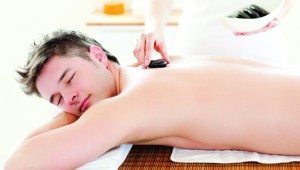The Healing Power of Massage ~ From Body Repair to Reversing the Blues
In 1886, Dr. William Murrell stated in the British Medical Journal, “Massage is of such inestimable value in the treatment of many intractable diseases that it is regretted that so little is known about it in this country, and that it is so rarely employed as a therapeutic agent.”
A 2013 survey by the American Massage Association (AMTA) showed that a majority of us are choosing massage therapy to treat such conditions as stress and pain management, according to Winona Bontrager, the association’s immediate past president. Of 1,007 adults surveyed, 75 percent opted for it within the previous year for stress or medical reasons, and 88 percent view massage as effective for pain relief.
“A growing body of evidence shows that massage therapy can be effective for a variety of health conditions,” reports Bontrager, adding that massage is rapidly becoming recognized as an important part of health and wellness.
Cody Landis, a licensed massage therapist and instructor at the Swedish Institute’s College of Health Sciences, in New York City, explains, “In the last few years, massage therapy research has been focusing more on the mechanisms by which the potential health benefits may be occurring—looking at the response of the brain, the immune system and the mechanisms of repair inside of muscle cells themselves.”
Relieves Stress
An AMTA survey reported that 32 percent of positive respondents used massage to relieve stress, and numerous recent studies have confirmed this. Research from Harvard Medical School shows that massage reduces pain and anxiety while increasing sleep and quality of life among metastatic cancer patients. Boston Medical Center researchers saw similar results among 60 cancer patients that underwent port placement surgery; 20-minute massages before and after surgery reduced participants’ stress and anxiety.
Australian researchers reporting in the Journal of Thoracic and Cardiovascular Surgery found that massage reduced pain, anxiety and muscle tension following heart surgery among 152 cardiac surgery patients. A study from Japan’s Toho University School of Pharmaceutical Sciences showed that aromatherapy massage significantly reduced psychological stress among elderly nursing home residents.
Reduces Depression
A study from Nashville’s Meharry Medical College of 43 HIV patients revealed that Swedish massage reduced their symptoms of depression. Lead researcher Russell Poland, Ph.D., a professor of psychiatry and biobehavioral sciences, observes, “When we designed the study, we didn’t expect to see such a large effect of massage. We remain surprised.”
The benefit was echoed by a University of California-Los Angeles study of 95 volunteers that displayed increases in their production of oxytocin hormone simultaneous with reductions in adrenocorticotropin hormone. Oxytocin is linked to compassion, empathy, maternal affection and social connection, while lowered adrenocorticotropin effects less stress.
Relieves Pain
Researchers in the Gynecology and Obstetrics Department of Brazil’s University of Sao Paulo studied 46 birthing women and determined that lumbar massage during labor reduced pain by 27 percent. In another study at Beijing’s Chinese PLA General Hospital, deep massage brought relief to 64 patients suffering from chronic low back pain.
Relief was reported by a third of 110 headache patients in a Turkish medical school study. Dhaka Medical College Hospital, in Bangladesh, found similar results in a study of 500 headache sufferers, many of which had migraines. Research from the University of Miami’s School of Medicine showed that massage reduced arthritis pain and increased both grip strength and range of motion among 42 rheumatoid arthritis patients.
Lead researcher Tiffany Field, Ph.D., director of Miami University’s Touch Research Institute, says, “We have known that massage therapy reduces substance P, [a neuropeptide] which causes pain, and that it increases serotonin, the body’s natural pain killer. We also know that deep sleep is critical to lowering substance P, increasing serotonin and reducing pain.”
Expands Acceptance
Lucy Liben, dean of massage therapy at the Swedish Institute, affirms the recent research as evidence documenting the numerous health benefits of massage therapy. “More and more consumers are seeking massage therapy for help with a variety of medical issues and conditions. Doctors are increasingly referring patients for such treatment and hospitals are enlisting more therapists to provide care for patients,” says Liben.
“Perhaps most importantly,” she adds, “research is offering us guidance in our work as massage therapists in how to provide the most effective care for chronic pain or musculoskeletal problems, during cancer treatment, during the changes of pregnancy or for any number of other health-related issues.”
Case Adams is a California naturopath and author of 25 books on natural healing. Learn more at CaseAdams.com.
What Researchers Now Know
Breast Cancer: A French study of 129 breast cancer patients found massage generally reduced lymphedema, a swelling of the lymphatic system, following treatments. The total reduction of lymphedema volume was 33 percent among those receiving massages, according to Gynecologic Oncology.
Carpal Tunnel Syndrome: Thirty minutes of massage with trigger point reduced symptoms and improved function in a study of 21 carpal tunnel patients (Journal of Bodywork and Movement Therapies).
Constipation: Massage therapy increased the average number of bowel movements among 33 hospitalized Korean children, as reported in the Journal of Korean Academy of Nursing.
Dementia: Research from Spain’s Extremadura University on 120 institutionalized elderly adults diagnosed with dementia found massage therapy generally helped improve behavior and sleep.
Migraines: Craniosacral massage reduced migraine occurrence in a study of 20 migraine sufferers from Iceland’s University of Akureyri, as published in Complementary Therapies in Clinical Practice.
Osteoporosis: A study of 48 postmenopausal women receiving traditional Thai massage showed increased bone formation after just four weeks. The massage group’s serum P1NP levels—which assesses bone formation—increased by 15 percent, while the control group saw no increases (BMC Complementary & Alternative Medicine).
Stroke: Massage therapy tended to speed rehabilitation after strokes for 45 Russian patients in a study published in Vopr Kurortol Fizioter Lech Fiz Kult.
<












